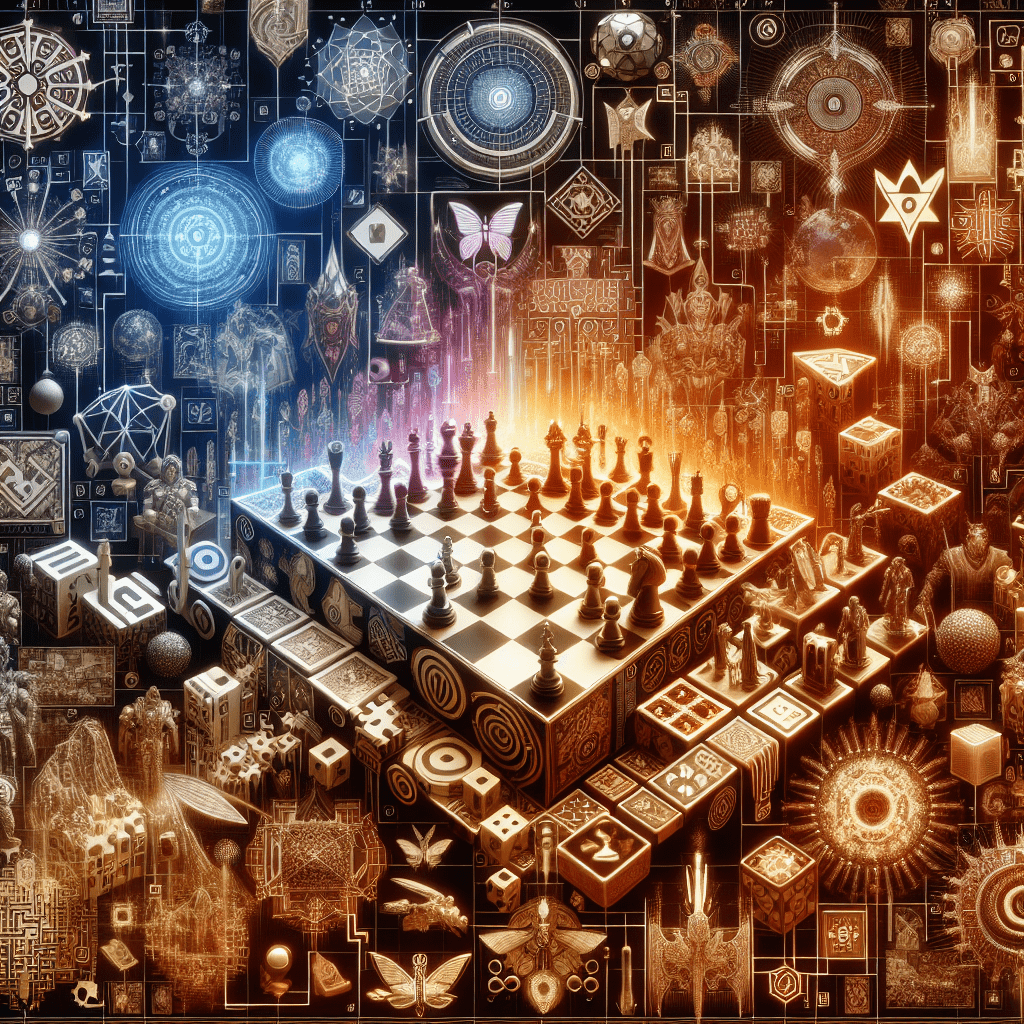Introduction
When it comes to gaming, tactics are the secret sauce that can turn a good player into a legend. These are the clever plans and strategies gamers use to outsmart their opponents and secure victory. In the competitive gaming arena, tactics are as crucial as skill, if not more so. From the early days of arcade cabinets to the modern era of console gaming evolution, strategies have morphed and expanded, becoming as diverse as the games themselves. In this roundup, we’ll dive into the most effective gaming tactics that have stood the test of time and how you can incorporate them into your gameplay.
Whether you’re battling it out in a fantasy realm or commanding armies in a real-time strategy game, understanding and mastering game mechanics is key. It’s not just about knowing the rules but also about finding ways to bend them to your advantage. Let’s explore how the pros do it and how you can start thinking like a tactical genius.
| Tactic Category | Description |
|---|---|
| Game Mechanics | Understanding the inner workings of the game to gain an edge. |
| Resource Management | Allocating resources efficiently to outlast opponents. |
| Positioning/Map Control | Strategically controlling the game environment. |
| Psychological Warfare | Using mind games to disrupt the opponent’s strategy. |
| Team Coordination | Working together to execute complex strategies. |
| Adaptation/Flexibility | Changing tactics on the fly to counter opponents. |
| Learning from Defeat | Analyzing losses to improve future performance. |
Understanding Game Mechanics
The first step to becoming a tactical mastermind is to get cozy with game mechanics. These are the rules and systems that govern how the game world operates. Knowing the ins and outs of these mechanics can give you the upper hand, allowing you to anticipate outcomes and plan several moves ahead. It’s like learning the language of the game, and once you’re fluent, you’ll be able to craft strategies that leave your opponents speechless.
Take, for example, the intricate dance of cooldowns and ability rotations in a MOBA. Understanding the precise timing can mean the difference between a triumphant team fight or a humiliating defeat. Games like “League of Legends” or “Dota 2” are prime examples where a deep knowledge of mechanics can lead to game-changing plays.
| Game | Mechanic | Tactical Advantage |
|---|---|---|
| MOBAs | Cooldown Management | Timing attacks for maximum impact |
| FPS | Map Knowledge | Ambushing opponents |
| RPGs | Stat Optimization | Building powerful character builds |
Resource Management Strategies
In the world of gaming, resources are your lifeblood. Whether it’s gold in a strategy game, mana in an RPG, or ammunition in a shooter, managing what you have effectively can make or break your game. The art of resource management involves not just conserving what you’ve got but knowing when to splurge for maximum effect. It’s a delicate balance that requires foresight and a bit of risk-taking.
Strategy games, such as “StarCraft II,” are a perfect example where resource management is critical. Players must juggle the collection of minerals and gas while expanding their base and army. It’s a high-stakes game of economic chess where one wrong move can lead to disaster.
| Resource Type | Game Genre | Management Tip |
|---|---|---|
| Gold | RTS | Invest in economy early for long-term benefits |
| Mana | RPG | Balance spell usage with regeneration items |
| Ammunition | FPS | Conserve ammo by aiming for precision |
Positioning and Map Control
Knowing where to be and when to be there is a huge part of gaming tactics. In many games, especially MOBAs and FPS titles, positioning can be as important as your ability to click fast. It’s about having a strategic presence, controlling key areas of the map, and using the terrain to your advantage. When done right, you can choke out the enemy’s options and dominate the game.
Games like “Overwatch” or “Counter-Strike” are prime examples where map control is essential. Holding down choke points or securing high ground can give your team the edge needed to clinch the win. It’s all about vision, anticipation, and knowing the lay of the land.
| Game Type | Positioning Tip | Map Control Strategy |
|---|---|---|
| MOBA | Ward key areas for vision | Control objectives for team buffs |
| FPS | Use high ground for advantage | Lock down choke points |
| Strategy Games | Scout enemy positions | Expand territory to limit enemy resources |
Psychological Warfare and Mind Games
Games aren’t just played on screens; they’re played in the minds of the players. Psychological warfare is the art of getting into your opponent’s head, making them second-guess their strategies and falter at critical moments. This can involve bluffing, baiting, or simply projecting confidence to unnerve the other side. It’s a subtle art, but when used effectively, it can lead to some of the most satisfying victories.
Professional poker players are masters of this, but the same tactics can be applied in gaming. In “Hearthstone,” for example, playing a card that suggests a certain strategy, only to switch it up the next turn, can lead to your opponent making costly mistakes. It’s all about the mind games.
| Tactic | Effect | Game Example |
|---|---|---|
| Bluffing | Forces opponents to make poor decisions | Poker, Hearthstone |
| Baiting | Lures opponents into traps | MOBAs, FPS |
| Confidence | Intimidates and demoralizes the enemy | Any competitive game |
Team Coordination and Communication
Multiplayer games are a symphony of chaos, and to turn that into a masterpiece, you need coordination and communication. The best teams in the world, like those competing in eSports tournaments, are not just a group of skilled individuals; they’re a single unit moving with purpose and precision. Effective communication allows for complex strategies to be executed flawlessly and can be the deciding factor in close matches.
Whether it’s calling out enemy positions in “Call of Duty” or coordinating a gank in “League of Legends,” good communication can elevate your team’s performance exponentially. It’s about clarity, brevity, and timing. Say what needs to be said, say it clearly, and say it at the right time.
| Communication Type | Purpose | Benefit |
|---|---|---|
| Callouts | Informing team of enemy positions | Tactical advantage |
| Strategy Planning | Discussing next moves | Coordinated action |
| Encouragement | Boosting team morale | Increased performance |
Adaptation and Flexibility
No battle plan survives contact with the enemy. This is as true in gaming as it is in any other competitive endeavor. The ability to adapt and be flexible with your tactics is what separates the good players from the great ones. It’s about reading the game, understanding your opponent’s strategy, and then adjusting your own approach to counter it.
Top players in games like “StarCraft II” or “Fortnite” are constantly adjusting their tactics based on what they’re up against. They’re flexible, they’re responsive, and they’re always one step ahead. This ability to pivot is crucial, especially in games that are as dynamic and unpredictable as these.
| Game | Adaptation Example | Flexibility Benefit |
|---|---|---|
| StarCraft II | Switching unit composition in response to enemy | Countering opponent’s strategy |
| Fortnite | Changing building tactics based on terrain | Gaining positional advantage |
| Chess | Altering opening strategy mid-game | Surprising the opponent |
Learning from Defeat
They say you learn more from a loss than a win, and in gaming, this is gospel truth. Analyzing your defeats is a crucial part of developing effective gaming tactics. It’s about understanding what went wrong, what could have been done differently, and how to improve for next time. This reflective process is what turns a defeat into a valuable lesson.
Many professional gamers and teams record their matches to review them later. This allows them to break down their performance, identify mistakes, and adjust their strategies accordingly. It’s a continuous cycle of improvement that keeps them at the top of their game.
| Aspect of Defeat | Analytical Focus | Improvement Outcome |
|---|---|---|
| Tactical Errors | Identifying poor decisions | Refined decision-making |
| Execution Flaws | Spotting mechanical mistakes | Improved skill execution |
| Communication Breakdown | Assessing team interaction | Enhanced team dynamics |
Conclusion
We’ve journeyed through the tactical landscapes of gaming, exploring the strategies that have helped players achieve victory across various genres and titles. From the precise exploitation of game mechanics to the subtle art of psychological warfare, these tactics are the tools that can elevate your gaming experience. As the gaming industry continues to evolve, with new games and updates constantly reshaping the battlefield, so too will the strategies we use to conquer them.
So, whether you’re a seasoned veteran or a newcomer looking to make your mark, remember that tactics are your greatest ally. Dive into the gaming industry overview to stay ahead of the curve, and don’t be afraid to experiment with different approaches. With practice, analysis, and a bit of creativity, you’ll find the winning formula that works for you. Game on!
FAQs
What are gaming tactics?
Gaming tactics are the strategies and plans that players use to gain an advantage over their opponents in a game. They can range from resource management to psychological tricks and require a deep understanding of the game’s mechanics.
Why are tactics important in competitive gaming?
Tactics are crucial in competitive gaming because they can be the difference between winning and losing. They involve not just skill, but also strategy, planning, and quick thinking, which are essential for outsmarting opponents.
How can I improve my gaming tactics?
To improve your gaming tactics, start by thoroughly understanding the game mechanics and rules. Watch replays







